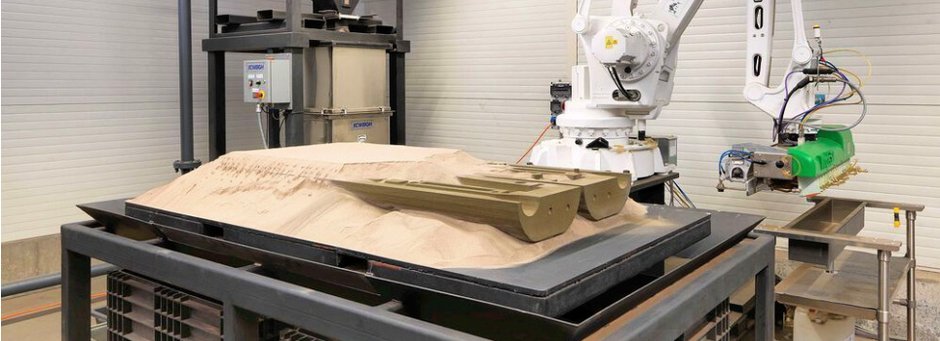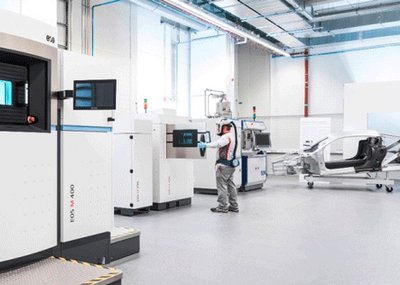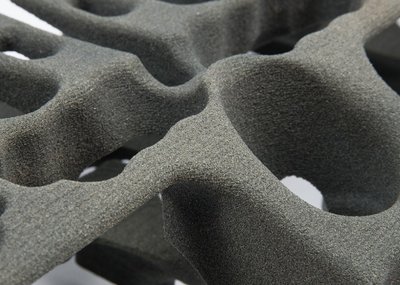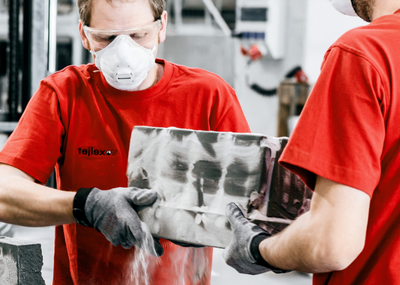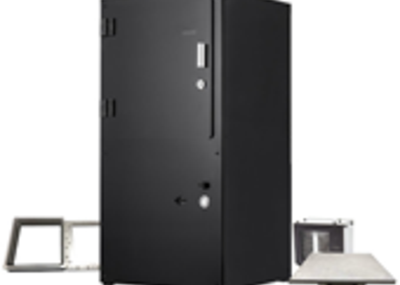Germany — Novel hybrid process chains expand classic mould making to include the advantages of 3D printing. The Blöcher foundry is the first company from Europe to use a new 3D sand printing system.
The Blöcher foundry specialises in the production of medium-sized and large aluminium sand castings. Blöcher is the first European company to invest in the additive manufacturing system of the US manufacturer Viridis. The new 3D sand printer is to be used in particular for on-demand production of complex spare parts, prototypes and very small and pilot series.
However, the new machine will not only be used in the Blöcher foundry for the rapid production of moulds for the production of spare parts and small series made of aluminium. The robot-assisted system is also used when urgent replacements are needed for defective, worn or lost tools for deep drawing, foaming, rotational moulding, thermoforming or blow moulding.
Fast mould making with complex structures
Blöcher chose the Viridis system because it is fully automated and can produce high-precision sand casting moulds and cores within a few hours. The system has an installation space of 1800 x 900 x 900 mm. This means that both individual moulds for cavities and several moulds of smaller dimensions can be produced in one and the same run. As usual in additive manufacturing, this is done by building up the workpieces layer by layer. In this case, a quartz sand premixed with a modified furan binder is used for this purpose. “In analogy to the geometry data of the targeted shape, the 3D printer partially applies a hardener in the sand, which shortly afterwards solidifies to the exact final contour,” explains company boss Jürgen Blöcher. Since the system works with a dimensional and repeat accuracy of +/- 0.010”, Blöcher plans to produce parts with complex geometries and demanding temperings on the Vidris system. The moulded parts are produced at speeds of up to 63 vertical millimetres per hour from the sand bed. “What remains of the dry sand can be reused in the next process. Not least because of this, the whole process is material-saving, resource-saving and very economical,” explains Jürgen Blöcher.
3D technology enables reverse engineering and re-design
The data sets for the construction process of the 3D sand printer usually come directly from the 3D design of the toolmakers. However, it is part of Blöcher Foundry's scope of services to also create these geometry data according to the customer's construction designs or sample parts. In reverse engineering or re-design, 3D CAD systems as well as scanning and digitising technologies are used to create new construction data for the 3D printing system.
Cooperation with 3D specialists
On the technological side, the Blöcher foundry cooperates closely with the neighbouring 3D printing service provider FKM Sintertechnik. In its own laser sintering factory, FKM Sintertechnik operates around 40 systems and specialises in selective laser sintering (SLS) and selective laser melting (SLM). Through the close cooperation, the Blöcher foundry would like to provide its customers with an extended range of services for the economic realisation of innovative solutions in the field of toolmaking.
Source: MA Alexander Stark, etmm-online.com

